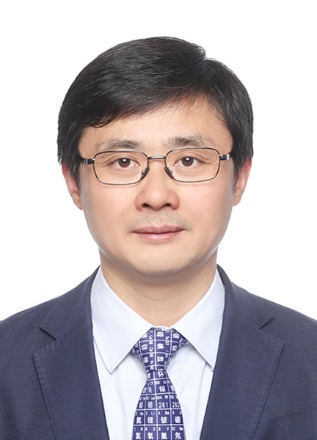
搜索网站、位置和人员

新闻与活动 活动信息
Chemistry Colloquium | Prof. Ming-Tian Zhang: Bimetallic Water Oxidation Catalysts
时间
2024年6月20日(周四)
下午16:00-17:30
地点
西湖大学云谷校区学术环E10-315
主持
西湖大学 理学院 & 人工光合作用与太阳燃料中心PI 张彪彪教授
受众
全体师生
分类
学术与研究
Chemistry Colloquium | Prof. Ming-Tian Zhang: Bimetallic Water Oxidation Catalysts
时间: 2024年6月20日(周四)下午16:00-17:30
Time: 16:00-17:30, Thursday, June 20, 2024
主持人: 西湖大学 理学院 & 人工光合作用与太阳燃料中心PI 张彪彪教授
Host: Prof. Biaobiao Zhang, PI of School of Science & Center of Artificial Photosynthesis for Solar Fuels, Westlake University
地址:西湖大学云谷校区学术环E10-315
Venue: E10-315, Yungu Campus, Westlake University
语言:中文
Language:Chinese

Prof. Ming-Tian Zhang,
Center of Basic Molecular Science, Department of Chemistry, Tsinghua University
Meng Minwei Technology Building, Tsinghua University, Haidian District, Beijing
E-mail: mtzhang@mail.tsinghua.edu.cn
主讲人/Speaker:
Dr. Ming-Tian Zhang is an associate professor of the Center of Basic Molecular Science (CBMS) and the Department of Chemistry at Tsinghua University. He earned his PhD in 2008 from Nankai University. Prior to joining Tsinghua University, he was a postdoctoral associate in the Department of Photochemistry and Molecular Science (Fotomol) at Uppsala University (2009-2011) and the Department of Chemistry at the University of North Carolina at Chapel Hill (2012-2013). Ming-Tian is broadly interested in artificial photosynthesis and small molecules activation and catalytic transformation. His current research focuses on developing molecular catalysts as a platform to understand the mechanism of water oxidation and selective reduction of O2 and CO2.
讲座摘要/Abstract:
The oxidation of water to oxygen, 2H2O → O2 + 4H+ + 4e-, is a key step for capturing solar energy in nature. Developing a molecular catalyst that can split water into oxygen and hydrogen is one of the main bottlenecks inhibiting the development of an effective and robust artificial photosynthetic system. The main challenge for catalyst development is that the catalytic process involves accumulative proton coupled electron transfer, multiple bond arrangements and finally the formation of O-O bond. Generally, a high energetic intermediate, Mn+=O, was essential to O-O bond formation. On the other hand, the formation of high energetic intermediates needs to be avoided as they can reduce the longevity of the WOC and make the operation potential far away from the thermodynamic potential of water oxidation. In PSII, Mn4Ca cluster distributes charge over multiple metallic centers to avoid charge accumulation on single site and formation of Mn(V) that was proposed as key intermediates for artificial molecular Mn based WOCs.
We recently reported that bimetallic cooperation could facilitate water oxidation via Cu(III) rather than Cu(IV) in the case of di-copper catalyst, Cu2(m -OH)(BPMAN). Experimental results and DFT calculation indicate that the cooperative activity of two proximal copper ions in this case plays a major role in the O-O bond formation. In this presentation, we will discuss our recent works on both di- and tri-nuclear bioinspired water oxidation catalysts.
讲座联系人/Contact:
理学院,项晓玲,邮箱:xiangxiaoling@westlake.edu.cn
School of Science, Xiaoling Xiang, Email: xiangxiaoling@westlake.edu.cn

















